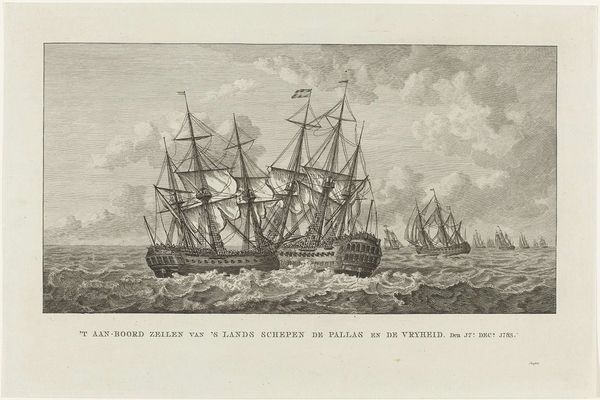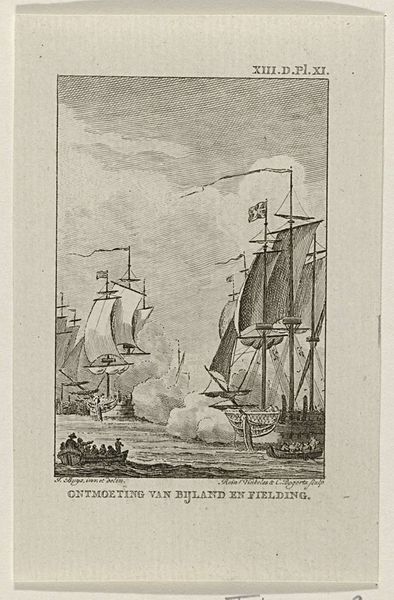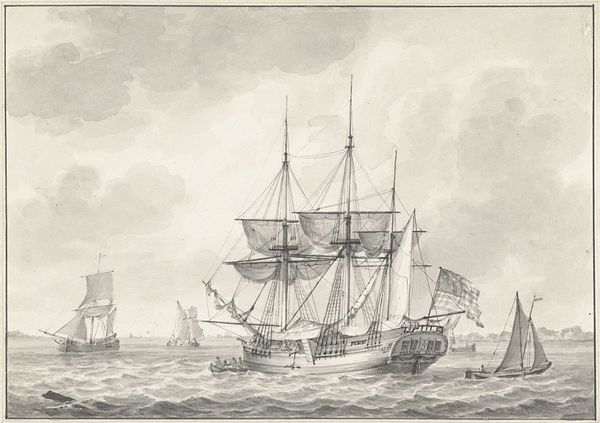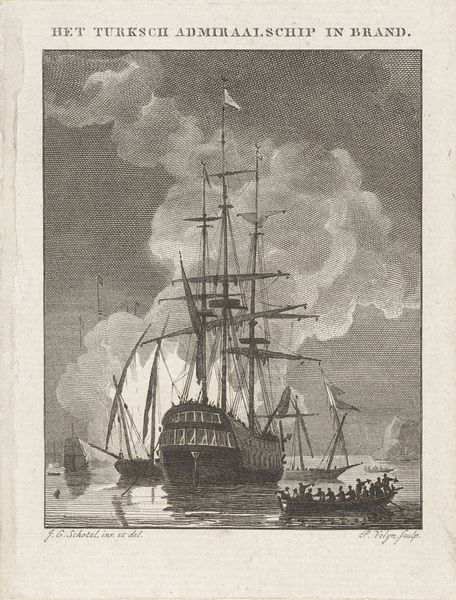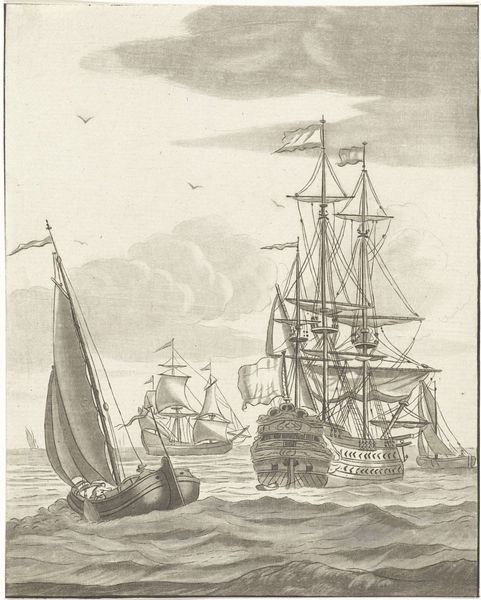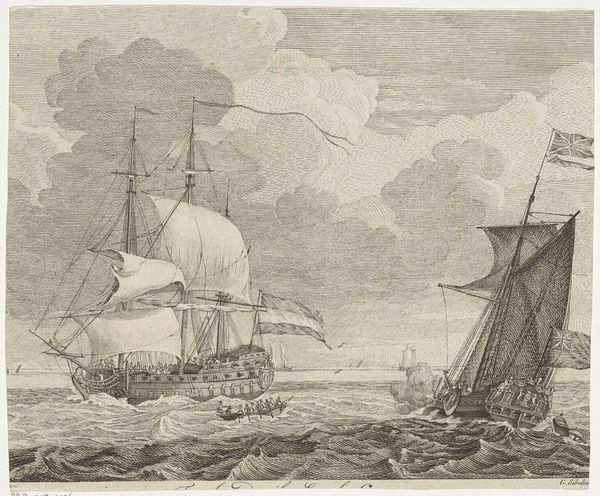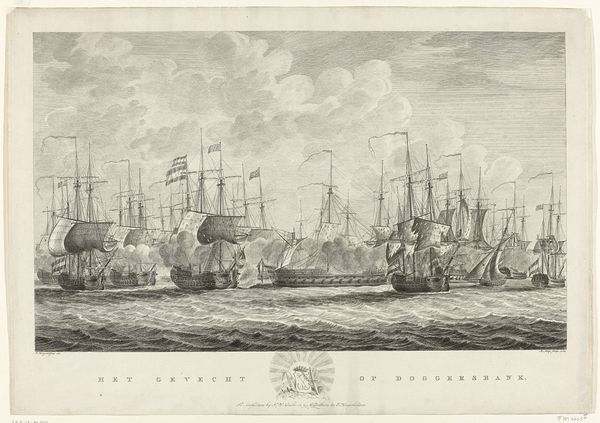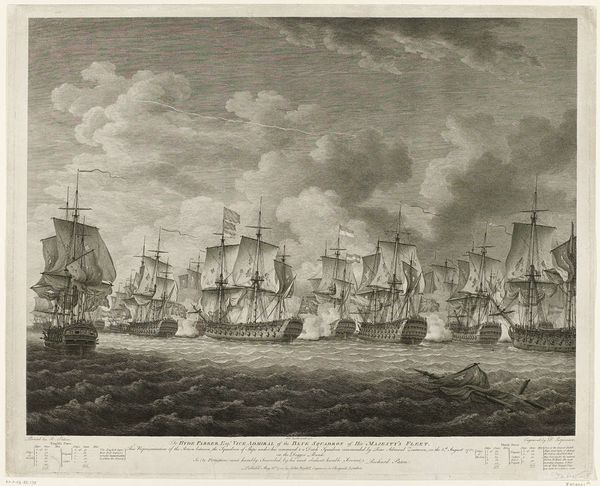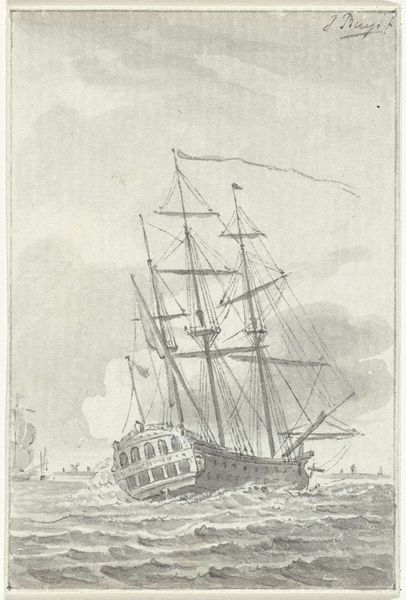
print, engraving
# print
#
old engraving style
#
landscape
#
genre-painting
#
history-painting
#
engraving
Dimensions: height 170 mm, width 129 mm
Copyright: Rijks Museum: Open Domain
Curator: This engraving by Cornelis van Noorde, dating from around 1769 to 1770, is titled "Four Greenland Ships Trapped in Ice." Editor: It has a distinct feeling of desolation. The ships, these huge structures, are rendered helpless amidst the stark white landscape. There is something menacing about the imposing whiteness surrounding the scene. Curator: Indeed. Van Noorde’s mastery of line creates a sense of depth. The arrangement of the ships, receding into the distance, establishes a clear spatial relationship. Also, the precise, almost scientific rendering, reminds us of the Enlightenment’s focus on observation. Editor: Yet, looking at those details--the straining polar bears and the seal among ice floes—one cannot ignore the brutal realities of 18th-century colonial expansion. These expeditions decimated indigenous populations and disrupted fragile Arctic ecosystems. Curator: The animals underscore the perilous environment and also demonstrate the ecosystem coexisting with, yet now threatened by, the intrusion of human endeavor. The use of line conveys a tactile sense of coldness. The variations and density within this visual vocabulary articulate the scene in a powerful way. Editor: Quite right, it's also crucial to recognize that what might read as “precise observation” to us, also facilitated resource extraction and territorial claims. The history of art must take into account these power dynamics if we are to avoid celebratory framings of such works. The engraving thus presents not only a moment in time but also opens conversations about ethical practice and responsible environmental interaction, past and present. Curator: Your reading complicates our perception. In analyzing it, my attention focuses on its aesthetic and formal achievements; its organization, light, shadow, and texture within the representational system it creates. Editor: As we conclude, it is the tension between the artist’s representation and our contemporary values that gives the image its lasting charge, making us more acutely aware of the intertwined legacies of colonialism and environmental exploitation.
Comments
No comments
Be the first to comment and join the conversation on the ultimate creative platform.
